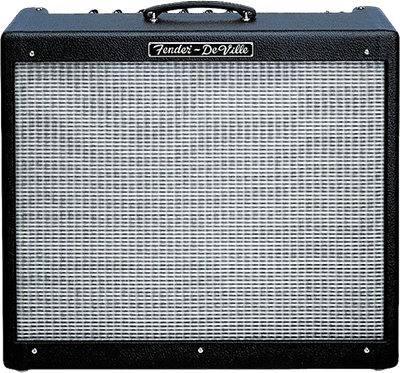| **"Reptilia"** is a song from [[the Strokes]] second studio album "Room on Fire," released on October 28, 2003. Album itself took its name from Reptilia lyrics, "The room is on fire as she's fixing her hair." | |
| ## Story behind the song | |
| - | The title "Reptilia" may refer to the "reptilian brain," the central part of the human brain |
| + | The title "Reptilia" may refer to the "reptilian brain," the central part of the human brain, which controls basic emotions such as love and hate. Though, possibly, the title can be a comparison of the girl in the song, who doesn't care about the guy, and Reptiles, who are cold-blooded creatures. <ref name="genius1">{{cite Genius.com|url="https://genius.com/The-strokes-reptilia-lyrics"|title="'Reptilia' by The Strokes"}}</ref> |
| When the song came out as a single in 2004, the Strokes took the image for the cover from the Atari 1980 video game "Centipede." | |
| The lead singer [[Julian Casablancas]] noticed this image at Drew Barrymore's house, "Drew has [the game] at her place. It's such a cool image. I saw it on the side of the machine and said, 'Hey, look — it's Reptilia. Done!' There are always so many different parts in a song that it's like some indistinct monster. The image sort of matched. It just all made sense. So why fight it?" <ref>{{cite Entertainment Weekly|url="http://ew.com/article/2004/05/14/arcade-game-inspires-strokes/"|title="Arcade game inspires the Strokes"}}</ref> | |
| FourPlay String Quartet covered the song in 2006 for the album "Now to the Future." | |
| https://youtu.be/WlM1XEIWhsU | |
| - | |
| + | Bluegrass band Punch Brothers covered this song at WNRN in Charlottesville, Virginia on February 16, 2010, before their show at Jefferson Theater. |
| https://www.youtube.com/watch?v=qayc6yJXG-8 | |
| ## Gear and settings | |
| ### Amps and effects | |
| #### Albert Hammond, Jr. and Nick Valensi | |
| - | |
| + | Albert Hammond, Jr. and Nick Valensi had almost identical setup: **[Fender Hot Rod DeVille 2×12's](https://www.ultimate-guitar.com/reviews/guitar_amplifiers/fender/hot_rod_deville_212/)** for their "raunchiness," an **[MXR Microamp](https://www.ultimate-guitar.com/reviews/guitar_effects/mxr/m133_micro_amp/)** as a tone/volume boost for [[solo|solos]], and a **[Jekyll and Hyde](https://www.ultimate-guitar.com/reviews/guitar_effects/visual_sound/jekyll_and_hyde_ultimate_overdrive/)** for [[distortion]]. Albert Hammond revealed: |
| "I had the Jekyll and Nick had the MXR, and we thought that we could both get some great sounds out of both of them, so we went shopping together." <ref>{{cite Guitar Magazine. October, 2001.|url="http://www.shesfixingherhair.co.uk/blog/interviews/interviews-guitar-magazine-october-2001"|title="'All the Young Dudes' by John Callaghan"}}</ref> | |
|  | |
| Bass: standard tuning (E A D G). | |
| ## Song key | |
| - | The song is written in the key |
| + | The song is written in the key of B minor. |
| ## Techniques | |
| The song is based on [[double stops]], [[chord]] strumming, and single-note riffs. Note, that some double stops aren't played on adjacent strings, so you should [[dead note|mute]] the strings between them. | |
| A notable feature of this song is [[interlude|interludes]] between the [[pre-chorus|pre-choruses]] and [[chorus (song part)|choruses]], which is played by Nick Valenti, using [[double stops]] with [[slide (technique)|slides]]. | |
| In the [[chorus (song part)|chorus]], Albert Hammond plays a single-note riff, which requires good hand-stretching. Nick continues his riff from the interlude. | |
| - | The [[solo]] is performed by Nick Valenti. Opening and closing parts of this solo are rather simple comparing to the middle part, which is played in fast tempo, involves [[bends]], [[releases]], [[pull-offs]] and ends on [[vibrato]]. Albert s |
| + | The [[solo]] is performed by Nick Valenti. Opening and closing parts of this solo are rather simple comparing to the middle part, which is played in fast tempo, involves [[bends]], [[releases]], [[pull-offs]] and ends on [[vibrato]]. Albert strums [[chord|chords]] during the whole solo. |
| - | The second [[verse]] differs from the first one, as it's played with Nick Valenti's [[palm-muted]] [[power chord|power chords]]. |
| + | The second [[verse]] differs from the first one, as it's played with Nick Valenti's [[palm mute|palm-muted]] [[power chord|power chords]]. |
| The [[outro]] of the song resembles the [[intro]], but after the [[volume swell]], the song abruptly ends with a single strum. | |
| ## Recommended lessons | |
| https://www.youtube.com/watch?v=v6DrKl95KnY | |
| ### Bass cover with tabs | |
| - | |
| + | Several parts of this cover deviate from the original version, as the bass line is based on a personal preference of the player. |
| https://www.youtube.com/watch?v=CFFbva7ggrA | |